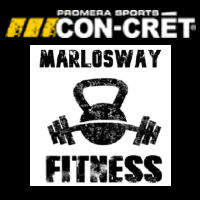When You Gain, the Pain
Definitely nothing is more discouraging than the discomfort and pain that takes location in the days that follow an exercise. The regular muscle pain and tightness experienced one to 2 days after an exercise might be so unwanted, particularly to the brand-new exerciser, that it might dissuade future exercise efforts. As somebody when discussed after her actually very first exercise, “What’s utilizing getting in shape if I can’t even increase in the early morning?”
Every exerciser, no matter experience, handle damaging and stiff muscles following a specific exercise. It is needed to comprehend why this happens and what to do about it in order to handle this regular, although bothersome, phenomenon.
Why do I feel a lot discomfort after an exercise?
The normal muscle discomfort experienced in the days following an exercise is described as Delayed Onset Muscle Soreness (DOMS) and is defined by tightness, discomfort and usually powerlessness in the worked out muscles. The discomfort can last a series of days after an exercise, with the height of the discomfort taking place about 48 hours following the exercise activity.
Research research study research study research study research study studies report that DOMS is more than probably the outcome of little damage or tearing of muscle fibers with the quantity of damage associated to the strength, quantity, and sort of workout that happens. DOMS is likewise called a person’s workout history, and is most normal amongst those who are either starting in a workout program or those who customize the strength or sort of workout.
DOMS appears exceptionally impacted by eccentric muscle actions. Regularly described as the “unwanted” part of a workout, eccentric action takes place when a muscle holds up versus while it is required to extend. This action occurs in motions such as enhancing stairs, downhill running, and landing a dive, or with the minimizing motions in workouts such as squats, lunges or pushups.
There is no definitive evidence, scientists have in reality really encouraged that DOMS might likewise be linked to swelling that happens around a muscle. Swelling might take place following workout, which increases pressure and triggers pain.
I can’t increase … How do I manage this?
No ensured taped method exists to completely remove DOMS, some treatments might for a brief time decrease a few of the pain, such as application of ice, ultrasound and anti-inflammatory medication (aspirin, ibuprofen). Massage might likewise lower a few of the signs, however this technique has actually truly not been exposed.
As the reviewing goes, “time heals all injuries.” DOMS usually dissipates within 3 to 7 days following workout without any unique treatment. Serious discomfort lasting longer than this time frame might expose a major injury and requires to be managed by a physician.
How can I avoid this from happening as quickly as when once again?
There might be some things you can do prior to you work out to keep DOMS at a minimum. Popular physical fitness theory recommends warming up absolutely then completely extending both previous to and after workout.
: The finest avoidance is routine workout. Research research study research study research study research study studies have actually truly exposed that continued training acts in a preventative style to reduce muscle discomfort. Routine endurance training, especially, has actually in reality been exposed to be a strategy of avoiding the start of DOMS.
The routine pain experienced after training, or DOMS, participates in the treatment of getting more reliable and reaching your physical fitness objectives. The straight-out finest technique to lower this rather annoying part of beginning or individualizing a fitness program is none aside from constant effort.
Generally described as the “unwanted” part of a workout, eccentric action happens when a muscle withstands while it is required to extend. DOMS typically dissipates within 3 to 7 days following workout without any unique treatment.
Frequently described as the “unwanted” part of a workout, eccentric action takes place when a muscle sustains while it is required to extend. Typically referred to as the “unwanted” part of a workout, eccentric action takes location when a muscle holds up versus while it is required to extend.
Typically discussed as the “unfavorable” part of a workout, eccentric action takes place when a muscle sustains while it is required to extend. Normally described as the “unfavorable” part of a workout, eccentric action takes location when a muscle holds up versus while it is required to extend.
Regularly described as the “unfavorable” part of a workout, eccentric action takes place when a muscle holds up versus while it is required to extend. Usually referred to as the “unfavorable” part of a workout, eccentric action takes location when a muscle holds up versus while it is required to extend.
Regularly referred to as the “unfavorable” part of a workout, eccentric action occurs when a muscle holds up versus while it is required to extend. Regularly described as the “unfavorable” part of a workout, eccentric action takes place when a muscle holds up versus while it is required to extend. Typically referred to as the “unwanted” part of a workout, eccentric action happens when a muscle holds up versus while it is required to extend. Typically gone over as the “unfavorable” part of a workout, eccentric action takes area when a muscle sustains while it is required to extend. Normally referred to as the “unfavorable” part of a workout, eccentric action takes location when a muscle holds up versus while it is required to extend.
Follow Me on Social Media